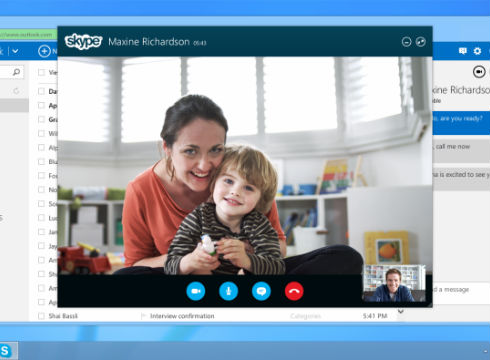Microsoft is adapting one of the most popular desktop PC applications, as it realigns to a more mobile world.
As consumers snap up more tablets and smartphones instead of desktops, Skype has needed to evolve. “The computing landscape has changed significantly since Skype was founded just 10 years ago. Originally, Skype relied on our users’ computers to do much of the heavy lifting,” wrote Skype Vice President Mark Gillett in a company blog post.
Architectural Change
Asserting that “more and more people choose to use Skype from devices like smartphones and tablet PCs,” the Skype team needed to deliver the features and performance that users expect from its peer-to-peer (P2P) calling platform without taxing mobile processors and draining batteries. The solution: the cloud.
 Microsoft acquired Skype in 2011 for $8.5 billion (£5.3bn), just as the tablet boom, led by Apple, kicked into high gear. In contrast to many of the software giant’s other offerings, Skype is practically platform-agnostic, with apps for Apple iOS, Google Android, BlackBerry, Windows Phone, Windows, Mac and Linux.
Microsoft acquired Skype in 2011 for $8.5 billion (£5.3bn), just as the tablet boom, led by Apple, kicked into high gear. In contrast to many of the software giant’s other offerings, Skype is practically platform-agnostic, with apps for Apple iOS, Google Android, BlackBerry, Windows Phone, Windows, Mac and Linux.
Now that users are tilting the scales toward mobile devices and operating systems, Skype is leaning a little harder on Microsoft’s cloud data centres.
“Our adoption of the new Skype cloud marks our biggest architectural change in 10 years,” Gillett wrote. Microsoft leverages the cloud to assist Skype client software and apps in connecting calls and passing chat messages. Client apps “evaluate bandwidth, connectivity and firewall settings” to determine the optimal path for voice and video calls, he said.
Microsoft employs its massive cloud infrastructure to improve battery life with a push-notification system for Skype-to-Skype calls that allows the mobile app to stay in a low-power sleep mode until it’s needed. “In order to send a push-notification message to a sleeping Skype app, the calling app sends the Skype ID and IP address of the parties, as well as the time and date, to our cloud,” explained Gillett.
This maximises the opportunities for the app to slip into sleep mode. It also allows for “new scenarios” such as “the ability to answer calls directly from the lock screen with your choice of audio, video or a message” in Windows 8.1, said Gillett.
Hardened Cloud
Skype’s cloud is also responsible for the new video messaging features available in Outlook.com, Gillett wrote. In addition, Microsoft’s cloud-based security capabilities help protect users. He stated that “anti-spam and anti-malware filters help stop the delivery of potentially dangerous content.” Over the next few months, the company plans to roll out new chat features that synchronise message status across a user’s devices.
Microsoft also claims to have hardened its cloud, preventing others from snooping on its users. “We take our responsibilities with regard to this data seriously, and to help secure and protect it, we apply strong physical, technical and administrative security protections, only storing partial IP addresses and cryptographically hashing the Skype IDs we store to help protect our users’ privacy,” wrote Gillett.
What do you know about Skype? Find out with our quiz!
Originally published on eWeek.





